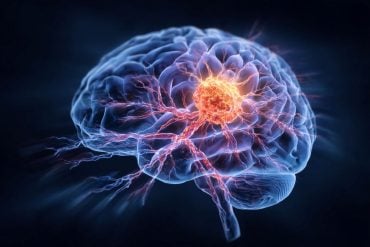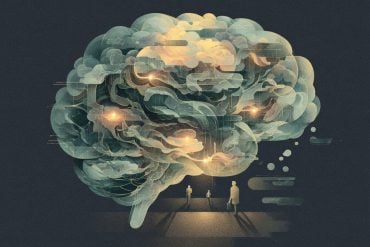Summary: Researchers developed an AI tool that can detect signs of Parkinson’s disease in patients’ blood samples, up to 15 years before the onset of symptoms. The tool uses machine learning to analyze combinations of metabolites in the body, revealing unique markers that may signal the onset of Parkinson’s. Although validation studies are needed, the tool was able to predict Parkinson’s disease with up to 96% accuracy in the study’s limited cohort.
Key Facts:
- The CRANK-MS tool developed by UNSW Sydney and Boston University researchers can detect signs of Parkinson’s disease in patients’ blood samples up to 15 years before the onset of symptoms, using machine learning to analyse combinations of metabolites in the body.
- In the study’s limited cohort, the tool was able to predict Parkinson’s disease with up to 96% accuracy, revealing unique markers that may signal the onset of Parkinson’s.
- The CRANK-MS tool is publicly available to researchers and can be used to diagnose other diseases using metabolomics data, offering new opportunities for the early diagnosis, treatment, and prevention of a range of illnesses.
Source: University of New South Wales
Scientists from UNSW Sydney with collaborators at Boston University have developed a tool that shows early promise in detecting Parkinson’s disease years before the first symptoms start appearing.
In research published today in the journal ACS Central Science, the researchers described how they used neural networks to analyze biomarkers in patients’ bodily fluids.
The researchers from UNSW School of Chemistry examined blood samples taken from healthy individuals gathered by the Spanish European Prospective Investigation into Cancer and Nutrition (EPIC).
Focusing on 39 patients who developed Parkinson’s up to 15 years later, the team ran their machine learning program over datasets containing extensive information about metabolites – the chemical compounds that the body creates when breaking down food, drugs or chemicals.
After comparing these metabolites to those of 39 matched control patients – people in the same study who didn’t go on to develop Parkinson’s – the team were able to identify unique combinations of metabolites that could prevent or potentially be early warning signs for Parkinson’s.
As UNSW researcher Diana Zhang explains, she and Associate Professor W. Alexander Donald developed a machine learning tool called CRANK-MS, which stands for Classification and Ranking Analysis using Neural network generates Knowledge from Mass Spectrometry.
“The most common method of analyzing metabolomics data is through statistical approaches,” says Ms Zhang.
“So to figure out which metabolites are more significant for the disease versus control groups, researchers usually look at correlations involving specific molecules.
“But here we take into account that metabolites can have associations with other metabolites – which is where the machine learning comes in. With hundreds to thousands of metabolites, we’ve used computational power to understand what’s going on.”
A/Prof. Donald says that in addition to looking at combinations of metabolites, the researchers used an unedited list of data.
“Typically, researchers using machine learning to examine correlations between metabolites and disease reduce the number of chemical features first, before they feed it into the algorithm,” he says.
“But here we feed all the information into CRANK-MS without any data reduction right at the start. And from that, we can get the model prediction and identify which metabolites are driving the prediction the most, all in one step. It means that if there are metabolites which may potentially have been missed using conventional approaches, we can now pick those up.”
How this could be significant for Parkinson’s Disease
At present, Parkinson’s Disease is diagnosed by observing physical symptoms such as a resting hand tremor. There are no blood or laboratory tests to diagnose non-genetic cases of it.
But atypical symptoms such as sleep disorder and apathy can present in people with Parkinson’s decades before the motor symptoms show up. CRANK-MS, therefore, could be used at the first sign of these atypical symptoms to rule in or out, the risk of developing Parkinson’s in the future.

However, A/Prof Donald emphasizes that validation studies are needed using much larger cohorts and conducted in multiple parts of the globe before the tool could be used reliably. But in the limited cohort examined for this study, results were promising, with CRANK-MS able to analyse chemicals found in blood to detect Parkinson’s disease with an accuracy of up to 96 percent.
“This study is interesting at multiple levels,” he says.
“First, the accuracy is very high for predicting Parkinson’s disease in advance of clinical diagnosis. Second, this machine learning approach enabled us to identify chemical markers that are the most important in accurately predicting who will develop Parkinson’s disease in the future. Third, some of the chemical markers that drive accurate prediction the most have been previously implicated by others to Parkinson’s disease in cell-based assays but not in humans.”
Food for thought
There were some interesting findings when examining the metabolites of people who went on to develop Parkinson’s in the study.
For example, triterpenoids were found in lower concentrations in the blood of those who later developed Parkinson’s disease compared to those who did not. Triterpenoids is a known neuroprotectant that regulates oxidative stress and is commonly found in foods such as apples, olives, and tomatoes. A future study could examine whether eating these foods could naturally protect against developing Parkinson’s disease.
Also worthy of further exploration was the presence of polyfluorinated alkyl substances (PFAS) in people who went on to develop Parkinson’s, which could be linked to being exposed to industrial chemicals.
“We have evidence to suggest that it is PFAS, but we need more characterization data to be 100 percent sure,” says A/Prof Donald.
Freely available to all
CRANK-MS is a tool that is publicly available to any researchers who would like to use machine learning for disease diagnosis using metabolomics data.
“We’ve built the model in such a way that it’s fit for purpose,” says Ms Zhang.
“The application of CRANK-MS to detect Parkinson’s disease is just one example of how AI can improve the way we diagnose and monitor diseases. What’s exciting is that CRANK-MS can be readily applied to other diseases to identify new biomarkers of interest.
“The tool is user-friendly where on average, results can be generated in less than 10 minutes on a conventional laptop.”
About this AI and Parkinson’s disease research news
Author: Lachlan Gilbert
Source: University of New South Wales
Contact: Lachlan Gilbert – University of New South Wales
Image: The image is credited to Neuroscience News
Original Research: The findings will appear in ACS Central Science







